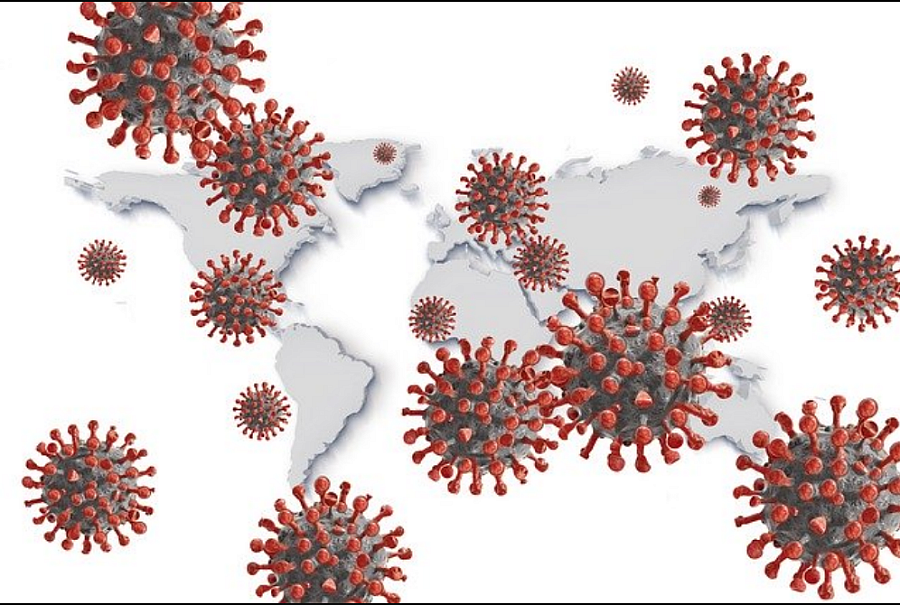Coronavirus Files: CDC shrinks quarantines; vaccines imminent; race impacts COVID-19 testing, vaccination and distance learning


CDC shortens recommended quarantine times
For months, 14 days has been the magic number, but on Dec. 2 the CDC announced that people exposed to someone with COVID-19, but lacking any symptoms themselves, could get back to their normal activities in 10 days. If they also test negative, they can stop quarantine after seven days.
The new guidelines reflect the fact that symptoms and infectiousness usually peak within five days. The agency hopes more people will quarantine if the duration is shorter. But 14 days remains the gold standard, and there’s a small risk — about 1% — that someone who leaves quarantine after 10 days could still spread the virus, reports Damian McNamara at MedScape.
The CDC has also said that essential workers who’ve been exposed to the virus may remain at work instead of quarantining, as a “last resort and only in limited circumstances.” In addition, the CDC recommended that people who insist on traveling for the holidays should be tested one to three days before they go, and within three to five days of return.
Pfizer and Moderna shots poised for deployment, while questions swirl about AstraZeneca’s
Pfizer’s shot got the green light from the U.K. on Dec. 2, prompting Benjamin Mueller of The New York Times to ask why that nation got there first. In the U.S., the FDA will convene its expert panel on Dec. 10, and is slower in part because it’s one of few national agencies that analyzes raw trial data, rather than relying on a company’s own analysis. Moderna is following close on Pfizer’s heels, with its own FDA review set for Dec. 17.
Meanwhile, scientists are puzzled by the results of AstraZeneca’s trial, writes Ewen Callaway in Nature. Among people who received two full doses, the vaccine was 62% effective. But that rose to 90% in a group of subjects who — by mistake — received just a half-dose in the first shot. Bloomberg reports that the company will probably conduct another trial aiming to confirm the 90% efficacy, which may slow U.S. approval.
Vice President Mike Pence told governors to expect vaccine distribution as early as next week, with more than 20 million people potentially vaccinated by year’s end, although setbacks could shrink that figure. The CDC’s Advisory Committee on Immunization Practices recommended that health care workers and residents of long-term care facilities be first in line. That’s despite questions about how effective the shot will be in nursing home residents, Melissa Healy reports in the Los Angeles Times. Distribution plans are ultimately in the hands of states and local governments.
Vaccines are expected to be available to the majority of Americans by spring or summer. But that projection leaves out children and pregnant people. Trials thus far have been limited to the non-pregnant and non-breastfeeding, even though pregnancy increases risk for COVID-related complications, reports Chelsea Cirruzzo at The Lily. Pfizer and Johnson & Johnson have begun vaccine trials in kids as young as 12, and Moderna just announced it would do the same. In The Washington Post, Meryl Kornfield reports that kids might not get immunized before the start of the 2021 school year.
Race, poverty influence pandemic consequences
Meanwhile, students in elementary and middle school are already falling behind in math, according to a recent report. For students of color, reading is also a growing area of concern.
President-Elect Joe Biden’s team plans to address the racial disparities that exacerbate the crisis for some populations, reports AP’s Carla K. Johnson, who interviewed a top Biden adviser from Yale’s medical school. “This is a unified voice, across the entire transition,” said Marcella Nunez-Smith in the interview.
The AP reports that people who can’t afford $150 or more for a COVID-19 test may be forced to wait for hours for a free test, then days for the results, forcing them to take time off work and deepening their economic distress. And given a long history of medical mistreatment and racism, some Black people are particularly wary of getting a vaccine. Nunez-Smith said testing and vaccination programs must address fairness and equity.
What we’re reading
- Sorry to Burst Your Quarantine Bubble, Rachel Gutman, The Atlantic
- The Long Darkness Before Dawn, Donald G. McNeil Jr., The New York Times
- A Mother, Her Son — and Their 1,500-Mile Search for Home, Julie Turkewitz and Isayen Herrera, The New York Times
- A Growing Number of Americans Are Going Hungry, The Washington Post
Resources & events
- Dec. 7 at noon Pacific: “Fireside Chat with Dr. Nancy Messonnier.” National Geographic’s Nsikan Akpan interviews the director of the National Center for Immunization and Respiratory Diseases about the CDC’s integrity and vaccine development, safety and distribution. Free.
- Dec. 8 at 4 p.m. Pacific: What Does it Take to Create a Safe and Effective Vaccine? This webinar from Science Writers in New York, hosted by David Levine and featuring Amit Kumar of Anixa Biosciences, will address vaccines for COVID-19 as well as cancer. Free.
- Dec. 14 at 11 a.m. Pacific: Poynter’s Reporting on the COVID-19 Vaccines webinar hosted by Al Tompkins will include top vaccine experts and discuss racial disparities. Free, suggested $15 donation.
- Also from Poynter, Roy Peter Clark offers 12 Writing Tools to Make COVID-19 Coverage Comprehensible.
- The Knight Science Journalism Fellowship at MIT has released the KSJ Science Editing Handbook, with chapters of use for reporters and editors alike. Free download.

